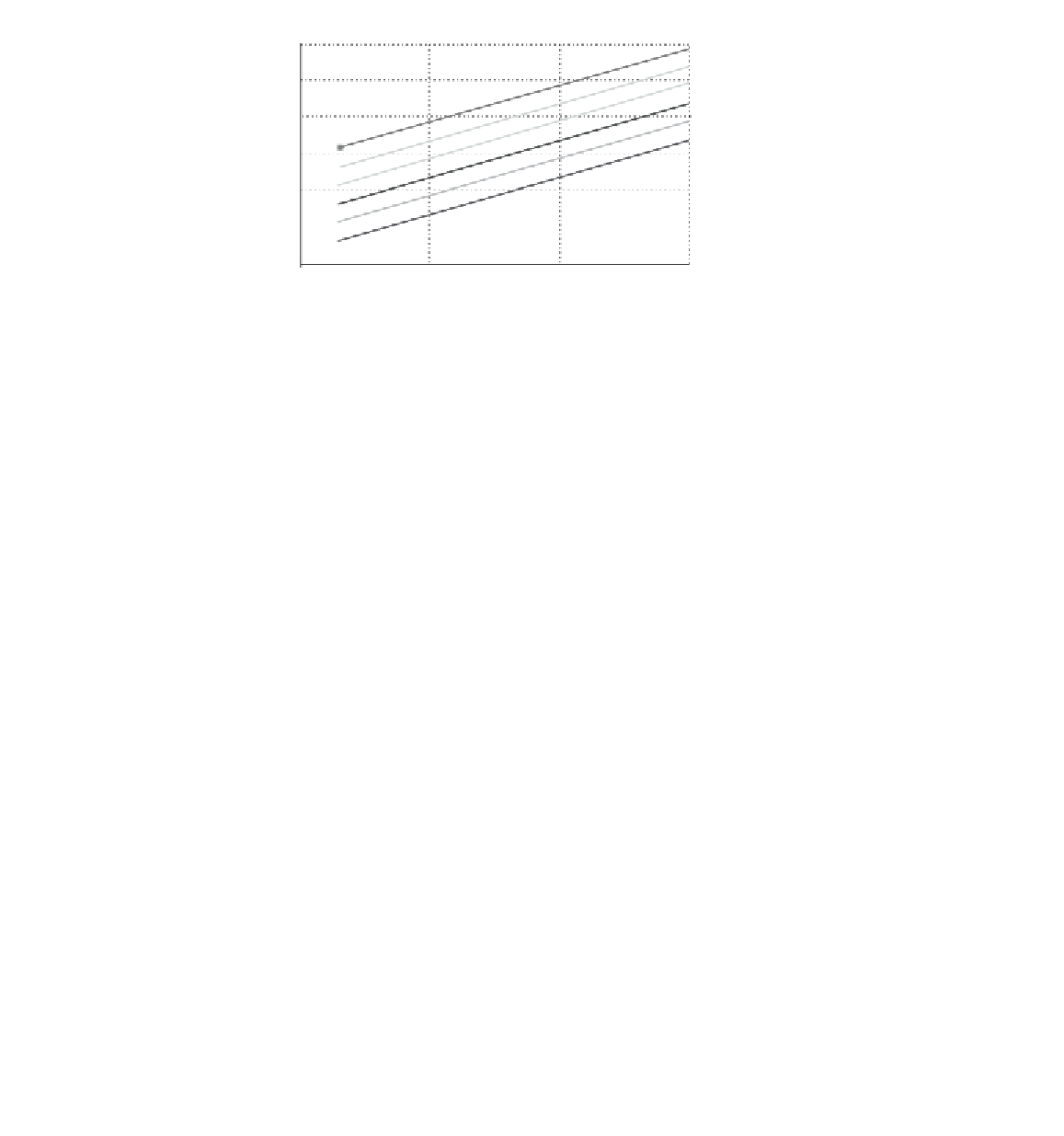Agriculture Reference
In-Depth Information
Figure 8.7
Comparison of static
head and log power output.
Power output increases
logarithmically with head.
From NoOutage.com,
http://www.nooutage.com/images/
hydroelectric-potential.gif.
100000
10000
1000
100
10
1
0.1
100
1000
1
10
Static Head (ft)
3 gpm
100 gpm
10 gpm
30 gpm
1000 gpm
300 gpm
NOTES:
1. Graph assumes 50% system efficiency and 20%, head loss in pipe due
to friction. Efficiency may be better at high heads. Friction losses will
less with larger diameter pipe.
2. Example reading of graph. For a 10 ft head with a flow of 300 gpm the
estimated output would be 200 watts.
3. Graph based on following formula: head
×
(1-loss)
×
flow
×
0.10
×
eff - watts
0.50 - 216 watts.
4. For additional information see our web site at http://www.NoOutage.com
Using example values: 10 ft
(1-0.20)
300 gpm
0.10
×
×
×
×
or send e-mail to info@NoOutage.com
INTEGRATED LIFE-CYCLE THINKING
Several student projects arrived at innovative solutions by embracing the concept
of life-cycle thinking and concepts of integration of systems to achieve a “whole”
system greater than the sum of the individual components. Senior mechanical
engineering major Hunter attempted to create a “smarter,” integrated system
of water use in buildings, from potable water to water as a heating and energy
source. The goal of Hunter's project was to integrate these systems in a manner
that would make them economically practical where current system components
had not yet become feasible as independent systems. Hunter's motivation grew
from his experience on the Home Depot Smart Home at Duke University
(www.smarthome.duke.edu/) and the challenges of incorporating photovoltaic
(PV) technology (see Fig. 8.8) in a way that made it economical in a cost-benefit
analysis. The PHD (power, heating, and drinking) system sought a solution that
utilizes both the products and by-products of solar power production to power,
heat, and provide potable water for the home. Hunter's research suggested that
there could be a way to take the waste heat from the photovoltaic cells and use
this as a heating source (see Fig. 8.9). His findings indicated that at temperatures



























































Search WWH ::

Custom Search